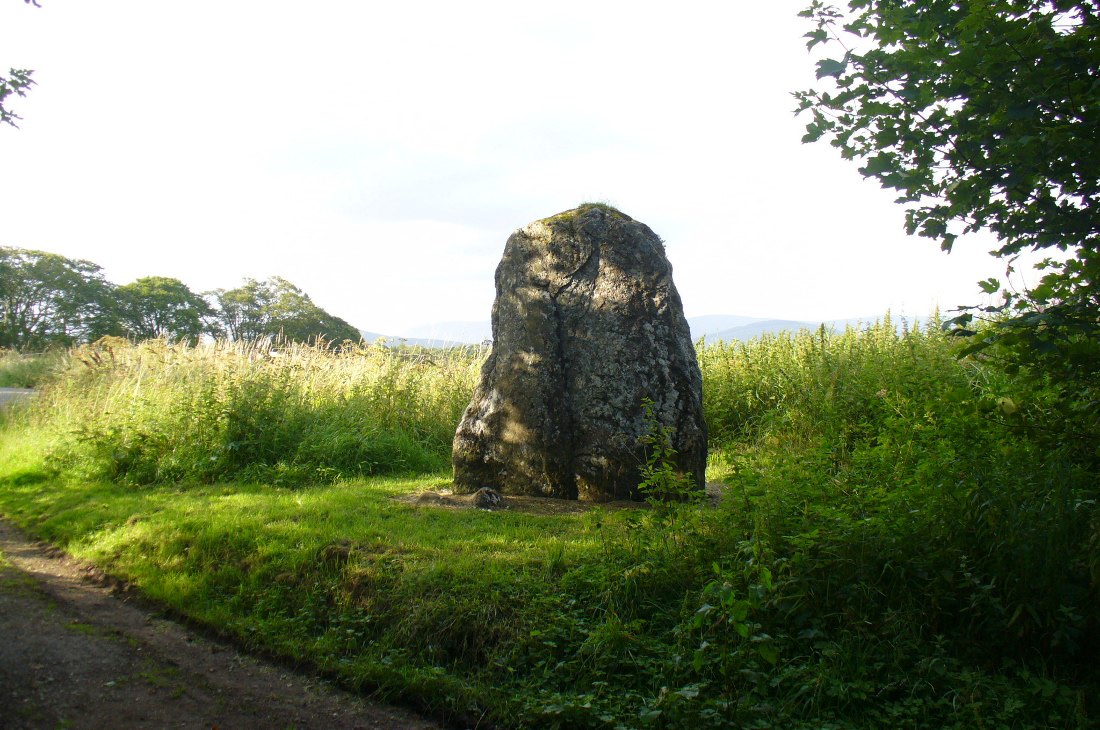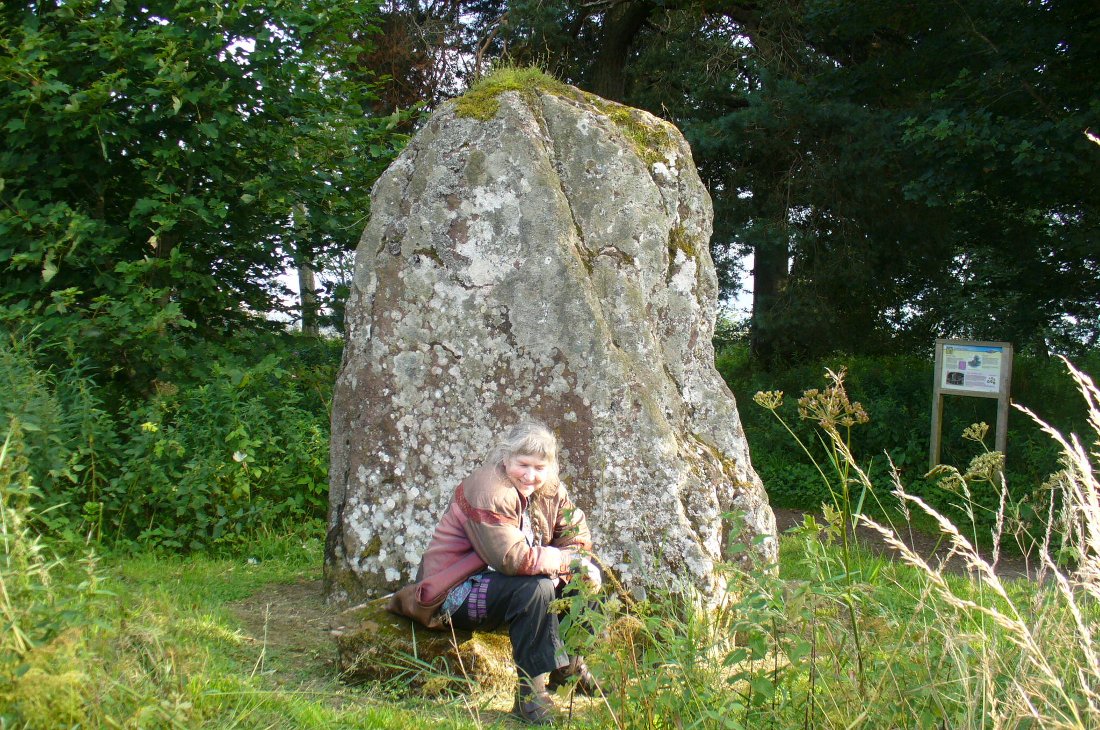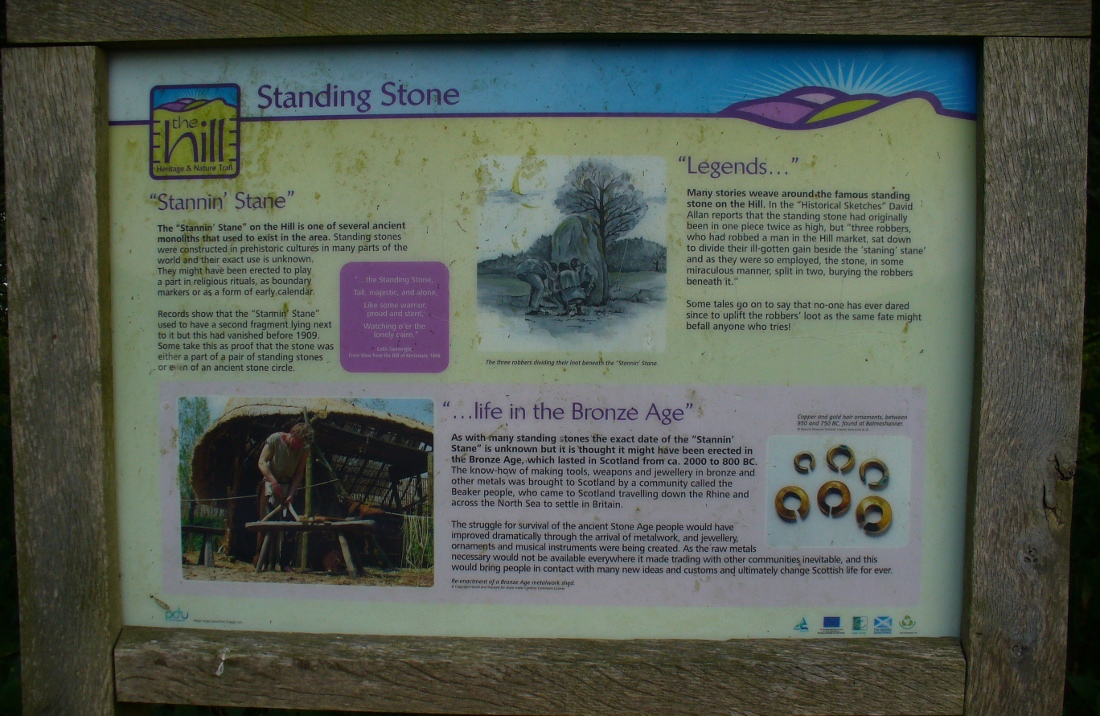Standing Stone: OS Grid Reference – NO 3917 5463

Also Known as:
- Canmore ID 32295
- Hill of Kirriemuir
- Stannin’ Stane
Various ways to get here, but make your way to the large cemetery up on the top of the hill. Once here, there is a playground and some trees. Go through the playground along the footpath for about 100 yards and you’ll eventually come to this great stone standing in front of you.
Archaeology & History

This place felt to have some real intrigue and hidden history laying close by when I came here for the first time the other week with Paul and Lindsey. Notably standing on the top of the hill northwest above Kirriemuir town, with an excellent view all round (just about!), speaking with hills and rolling countryside and the feel of other monuments of the same age…but seemingly all alone at the moment…
The Kirriemuir Hill standing stone is reputedly the last survivor of a megalithic ring, or stone circle, according to old tongues and local folklore—though Aubrey Burl didn’t include it in his magnum opus. And apart from the smaller piece of stone near its base and the curious long stone in an adjacent field wall not far away, this large 9-foot tall standing stone seems the last of its clan up here.
The stone was mentioned briefly in A.J. Warden’s (1884) massive history work on the region, where—near some legendary rocking stones that have long since been destroyed—he simply told that,
“The remains of a standing stone about 9 feet in height, by about 4 J feet in breadth, still rears its head above the Market Muir, and forms a very conspicuous object there.”
It hasn’t fared too well in archaeological surveys either, but thankfully local historians have written about it. Herbert Coutts (1970) told it to be,
“An impressive standing stone about 9ft (2.7m) in height and 6½ft (1.9m) broad at the base. A recumbent stone is reported to have once lain nearby but has long since been removed.”
This recumbent stone may be the one sitting in one of the adjacent walls.
Folklore

A notice board set back from this great stone gives a good outline of its known history, archaeological speculations and the folklore of the place. As well as it being said that Kirriemuir’s hill stone was once part of a stone circle, local markets were once held close by. Ascribed as being the burial site of three robbers, local historian David Allan (1864) was the first to write the legend which told that,
“three robbers, who had robbed a man in the Hill market, sat down to divide their ill-gotten gain beside the ‘staning stane’ and as they were so employed, the stone, in some miraculous manner, split in two, burying the robbers beneath it.”
The local history board tells “that no one has ever dared since to uplift the robbers’ loot, as the same fate might befall anyone who tries”!
…to be continued…
References:
- Allan, David, Historical Sketches, Original and Select of Kirriemuir and District, Robert Park: Dundee 1864.
- Coutts, Herbert, Ancient Monuments of Tayside, Dundee Museum 1970.
- Warden, Alex J., Angus or Forfarshire: The Land and People – Descriptive and Historical – volume 4, Charles Alexander: Dundee 1884.
© Paul Bennett, The Northern Antiquarian